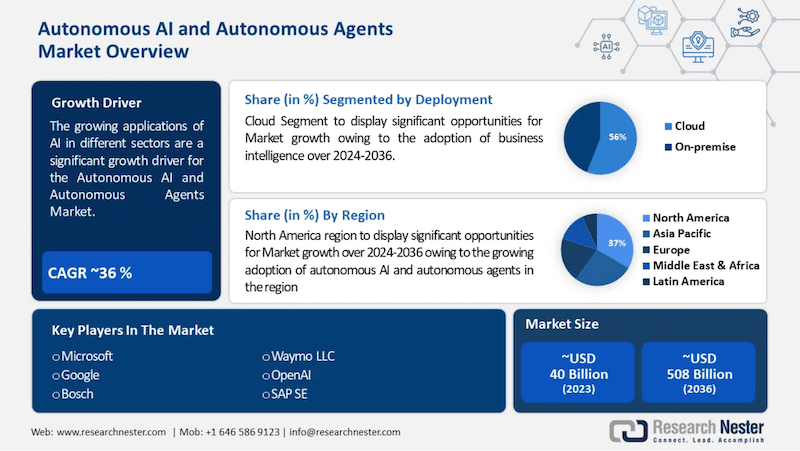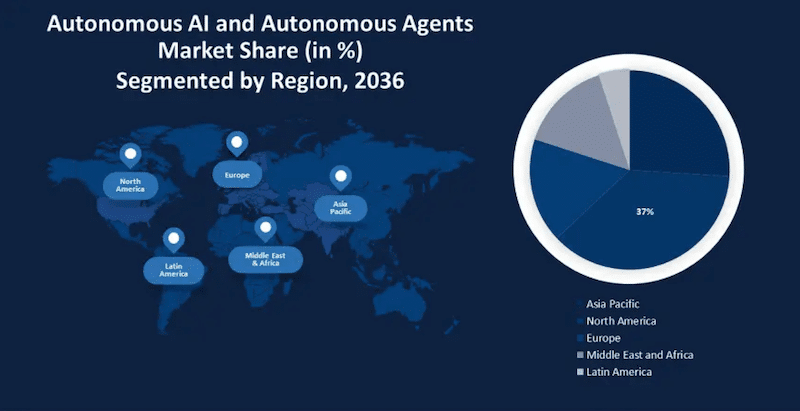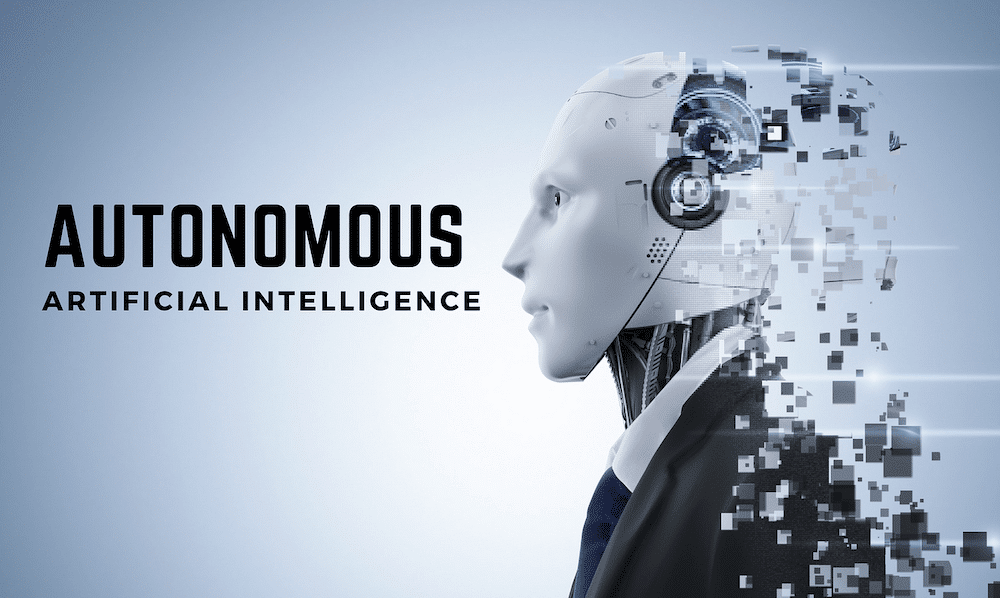Global Market Size, Forecast, and Trend Highlights Over 2024-2036
The market size of Autonomous AI & Autonomous Agents is expected to grow at a 36% CAGR between 2024 and 2036. The industry size in 2023 was $40 Billion. The market size is expected to reach $508 Billion by 2036. One of the main factors driving the growth of the market is the increasing use of AI in various industries. In 2024, a report showed that 22% of enterprises are actively incorporating AI into their business processes across a wide range of tech products and processes.
AI is increasingly being used in various industries, such as ecommerce, healthcare, financial services, transportation, manufacturing, etc., to solve complex problems and enhance processes. These applications use sophisticated algorithms, machine learning techniques and data analysis to gain important insights and make intelligent decisions.
Autonomous systems operate without the need for human intervention, reducing the risk of fatigue, distraction and supervision. Autonomous AI systems make decisions in fractions of a second, using data analytics to reduce the risk of accidents and errors as well as enhance safety and reliability in industries like transportation and healthcare. These factors are driving market growth.

Nester Research: Autonomous Al Market Overview Growth Drivers
Increasing adoption in ecommerce settings – The use of Artificial Intelligence (AI) in ecommerce is a huge opportunity. Autonomous AI has the potential to revolutionise hyper-personalised product selection opportunities. For example, autonomous AI systems that analyse consumer buying habits with a high degree of accuracy and independently identify imminent purchases, beyond the comprehension of human beings.
Increasing funding and support initiatives by the government – The advancement of autonomous technologies is supported by increasing funding and support initiatives from the government. Governments’ investment helps to accelerate the adoption and deployment of autonomous solutions across the industry, thus expanding the market size, as they understand the strategic significance of AI.
For example, in the US, several national artificial intelligence research institutes (NIRIs) have been established by the NSSF (National Science Foundation) in various fields of artificial intelligence. In addition, the US government has allocated USD 1 billion for 12 new artificial intelligence (AI) and quantum research labs. Singapore has established the Centre of Excellence for testing & research of Autonomous Vehicles (CetRAN), in partnership with the National Polytechnic University of Singapore.
Demand for Edge AI Computing is on the rise – Edge AI is an emerging trend in the Autonomous AI and Autonomous Agents market, emphasising decentralised Instead of relying solely on central cloud computing, the processing will be done locally on devices. This shift leads to faster decision-making, closer to the source of data, and improved operational efficiency. As far as latency, bandwidth usage and data security are concerned, edge AI is especially useful for real-time processing IoT devices, and scenarios where reliance on the Cloud is impractical or inefficient.

Nester Research: Challenges
One of the biggest challenges to the success of autonomous AI and agents is their lack of adaptability and context awareness. Human interactions are complex and real-world situations are dynamic, so AI systems often struggle to adapt to new situations or new environments, even though they excel at certain tasks within pre-defined parameters.
The concept of conceptual understanding, which is the ability to discuss the situation, understand the situation, and respond appropriately to different prompts and environmental factors, is a major challenge for the AI algorithms’ task. The growth of autonomous AI and the market for autonomous agents may be hindered by concerns about data protection and privacy. Safety and legal concerns may impinge on the market from growing. Ultimately this timidity will catch up with reality, as an appreciation of personal control with legislative enforcement ensures compliance by users.





